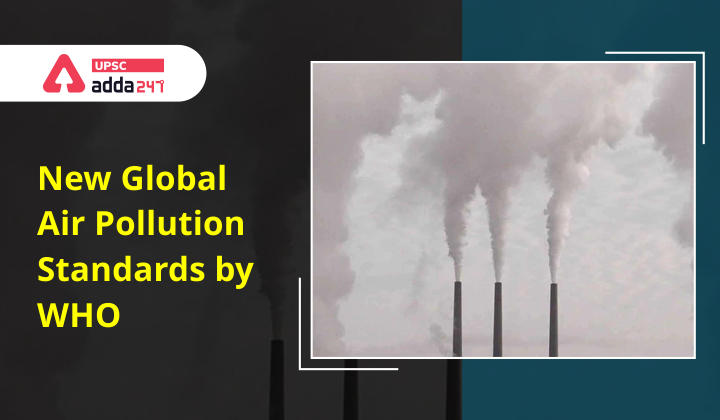Table of Contents
WHO Global Air Quality Guidelines- Relevance for UPSC Exam
- GS Paper 3: Environment- Conservation, environmental pollution, and degradation.
WHO Global Air Quality Guidelines- Context
- Recently, the World Health Organization (WHO) in its first-ever update since 2005 has tightened global air pollution standards.
- WHO updated these standards in a recognition of the emerging science in the last decade that suggests the impact of air pollution on health is much more serious than previously envisaged.
WHO Global Air Quality Guidelines- Key Points
- WHO Global Air Quality Guidelines provide clear evidence of the damage air pollution inflicts on human health, at even lower concentrations than previously understood. Key findings are-
- In 2019, 99% of the world population was living in places where the WHO air quality guidelines levels were not met.
- Ambient (outdoor air pollution) in both cities and rural areas was estimated to cause 4.2 million premature deaths worldwide in 2016.
- Some 91% of those premature deaths occurred in low- and middle-income countries and the greatest number in the WHO South-East Asia and Western Pacific regions.
- Indoor smoke is a serious health risk for some 3 billion people who cook and heat their homes with biomass, kerosene fuels and coal.
- WHO recommends new air quality levels to protect the health of populations: This is to be done by reducing levels of key air pollutants from the environment, many of which are also responsible for Global Climate Change.
- Key Changes: WHO announces limits for six pollutant categories– particulate matter (PM) 2.5 and 10, ozone (O3), nitrogen dioxide (NO2) Sulphur dioxide (SO2) and carbon monoxide (CO).
| Pollutant | Averaging Time | 2005 (AGQs) | 2021 (AGQs) |
| PM 2.5 | Annual and 24 Hour mean | 10 and 25 Respectively | 5 and 15 Resp. |
| PM 10 | Annual and 24 Hour mean | 20 and 50 Resp. | 15 and 45 Resp. |
| Ozone (O3) | Peak Season and 8 hours | Undefined for peak season and 100 for 8 hours | 60 and 100 resp. |
| NO2 | Annual and 24 Hour mean | 40 and undefined resp. | 10 and 25 resp. |
| SO2 | 24 hours | 20 | 40 |
| CO | 24 hours | Undefined | 4 |
Get free video for UPSC CSE preparation and make your dream of becoming an IAS/IPS/IRS a reality
WHO Global Air Quality Guidelines- Impact on India
- India’s National Ambient Air Quality Standards (NAAQS) don’t meet the WHO’s existing standards, hence, the updated global air pollution standards won’t affect India immediately.
- Experts say that the WHO move sets the stage for eventual shifts in policy in the government towards evolving newer stricter standards.
- National Clean Air Program: It aims for a 20% to 30% reduction in particulate matter concentrations by 2024 in 122 cities, keeping 2017 as the base year for the comparison of concentration.
- These are cities that don’t meet the NAAQS when calculated from 2011-2015.




 TSPSC Group 1 Question Paper 2024, Downl...
TSPSC Group 1 Question Paper 2024, Downl...
 TSPSC Group 1 Answer key 2024 Out, Downl...
TSPSC Group 1 Answer key 2024 Out, Downl...
 UPSC Prelims 2024 Question Paper, Downlo...
UPSC Prelims 2024 Question Paper, Downlo...
